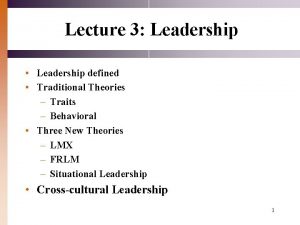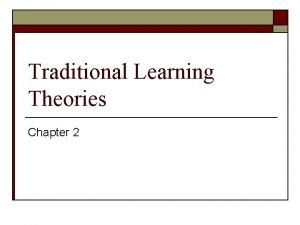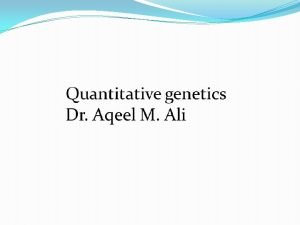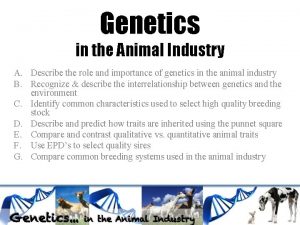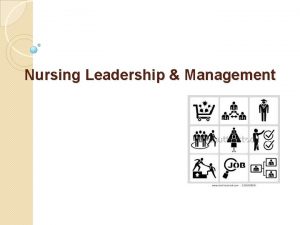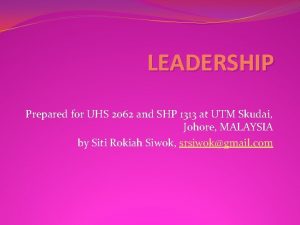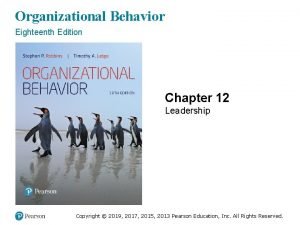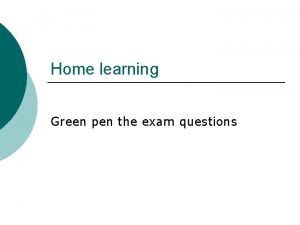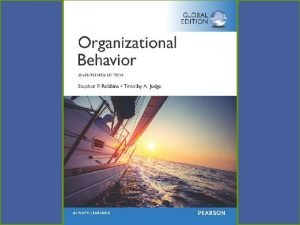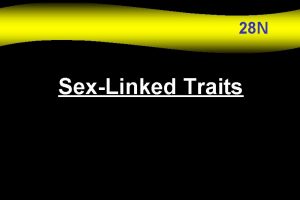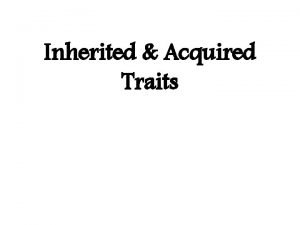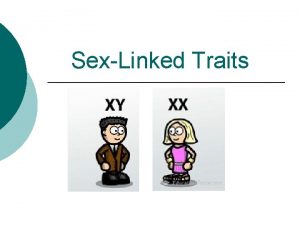Lecture 3 Leadership Leadership defined Traditional Theories Traits













- Slides: 13

Lecture 3: Leadership • Leadership defined • Traditional Theories – Traits – Behavioral • Three New Theories – LMX – FRLM – Situational Leadership • Cross-cultural Leadership 1

Full Range of Leadership Model

Transformational Leadership Factors: Four Factors (Is) • Idealized Influence – Acting as strong role models – High standards of moral and ethical conduct – Making others want to follow the leader’s vision • Inspirational Motivation – Communicating high expectations – Inspiring followers to commitment and engagement in shared vision – Using symbols & emotional appeals to focus group members to achieve more than self-interest Peter G. Northouse, Leadership: Theory and Practice, Seventh Edition. © 2016 SAGE Publications, Inc.

Transformational Leadership Four Factors (Is) • Intellectual Stimulation – – – Stimulating followers to be creative and innovative Challenging their own beliefs and valuing those of leader and organization Supporting followers to Try new approaches Develop innovative ways of dealing with organization issues • Individualized Consideration – – Listening carefully to the needs of followers Acting as coaches to assist followers in becoming fully actualized Helping followers grow through personal challenges Ex. Showing optimism helps employees become more engaged in their work (Tims et al. , 2011) Peter G. Northouse, Leadership: Theory and Practice, Seventh Edition. © 2016 SAGE Publications, Inc.

Transformational Leadership Strengths • • • Broadly researched. Widely researched, Intuitive appeal. It makes sense to people. Process focused Leadership as a process between followers and leaders. Expansive view. Provides a broader view emcompassing other models Emphasizes followers’ needs, values, and morals. Effectiveness. Evidence to supports it is an effective model. Peter G. Northouse, Leadership: Theory and Practice, Seventh Edition. © 2016 SAGE Publications, Inc.

Transformational Leadership Criticisms • Lacks conceptual clarity – Dimensions are not clearly delimited – Overlaps with other similar conceptualizations of leadership • Measurement questioned – Validity of MLQ not fully established – Some transformational factors are not unique solely to the model • Treats leadership more as a personality trait than a behavior that can be taught • No causal link between transformational leaders and changes in followers • Thought to be elitist and antidemocratic • Suffers from heroic leadership bias Peter G. Northouse, Leadership: Theory and Practice, Seventh Edition. © 2016 SAGE Publications, Inc.

Situational Leadership (Hersey & Blanchard) ÷ Situational Approach Perspective ÷ Leadership Styles ÷ Developmental Levels ÷ How Does the Situational Approach Work? 7

8

9

Situational Leadership Strengths • Marketplace approval. Situational Leadership® is perceived as providing a credible model for training employees to become effective leaders. • Practicality. Situational Leadership® is a straightforward approach that is easily understood and applied in a variety of settings. • Prescriptive value. Situational Leadership® clearly outlines what you should and should not do in various settings. • Leader flexibility. Situational Leadership® stresses that effective leaders are those who can change their styles based on task requirements and subordinate needs. • Differential treatment. Situational Leadership® is based on the premise that leaders need to treat each subordinate according to his/her unique needs. 10

Situational Leadership Criticisms • Does not account for how particular demographics influence the leader-subordinate prescriptions of the model • Fails to adequately address the issue of one-to-one versus group leadership in an organizational setting • Empirical testing declined after it became very popular • Questionnaires are biased in favor of Situational Leadership®. 11

Three Leadership Theories (summary) • LMX (Graen) – – Leader – follower interaction – Ingroups and outgroups • FRLM (Bass & Avolio) – Transformational/ transactional – Passive / mgt by exception: pos neg behaviors • Situational Leadership (Hersey Blanchard) – Leader style / behavors fits the progress of follower 12

Cross-Cultural Leadership Studies • Global leadership & organizational behavior effectiveness (GLOBE) – Large-scale cross-cultural study of leadership by 170 social scientists & management researchers in over 60 countries 13
 Traditional theories of leadership
Traditional theories of leadership It is a collection of well-defined objects
It is a collection of well-defined objects Traditional learning theories
Traditional learning theories 01:640:244 lecture notes - lecture 15: plat, idah, farad
01:640:244 lecture notes - lecture 15: plat, idah, farad Software defined networking vs traditional
Software defined networking vs traditional Qualitative traits vs quantitative traits
Qualitative traits vs quantitative traits Qualitative traits vs quantitative traits
Qualitative traits vs quantitative traits Qualitative traits vs quantitative traits
Qualitative traits vs quantitative traits Nursing leadership theories and styles
Nursing leadership theories and styles Early theories of leadership
Early theories of leadership Michigan studies of leadership
Michigan studies of leadership Summarize the conclusions of trait theories of leadership.
Summarize the conclusions of trait theories of leadership. Exam questions on leadership theories
Exam questions on leadership theories Summarize the conclusions of trait theories of leadership.
Summarize the conclusions of trait theories of leadership.
